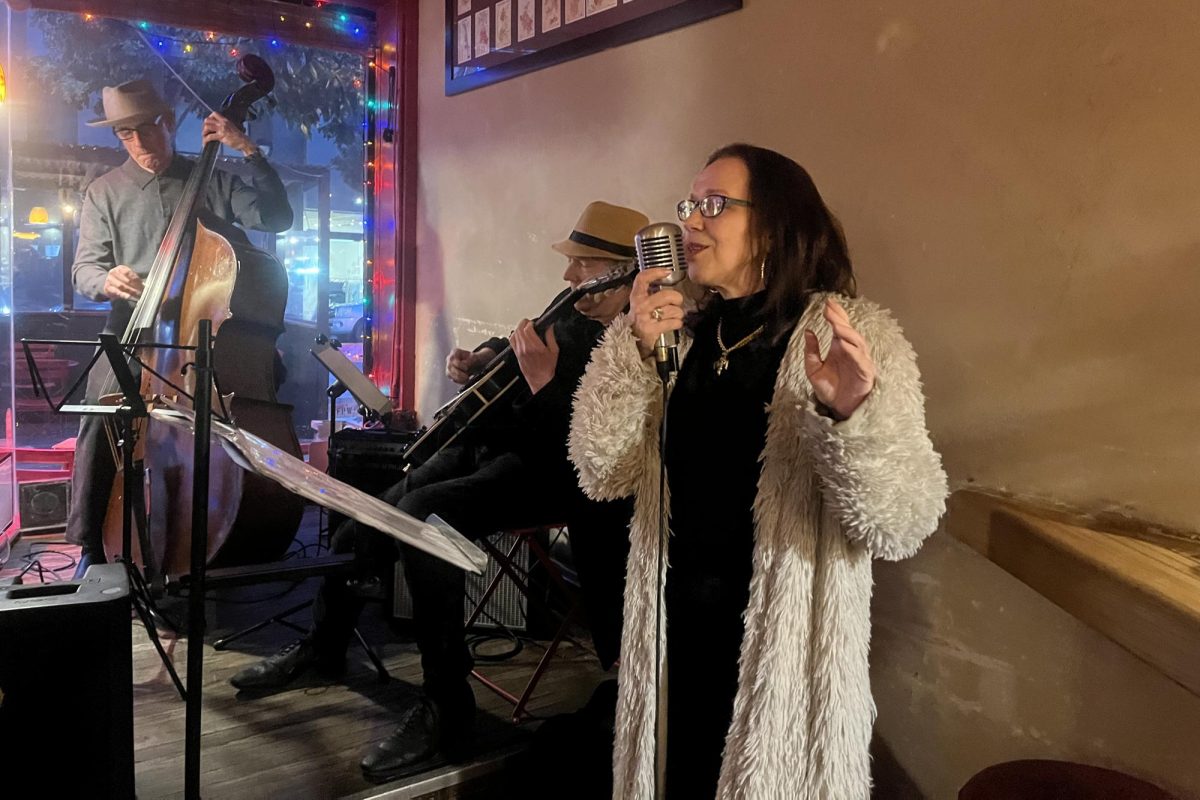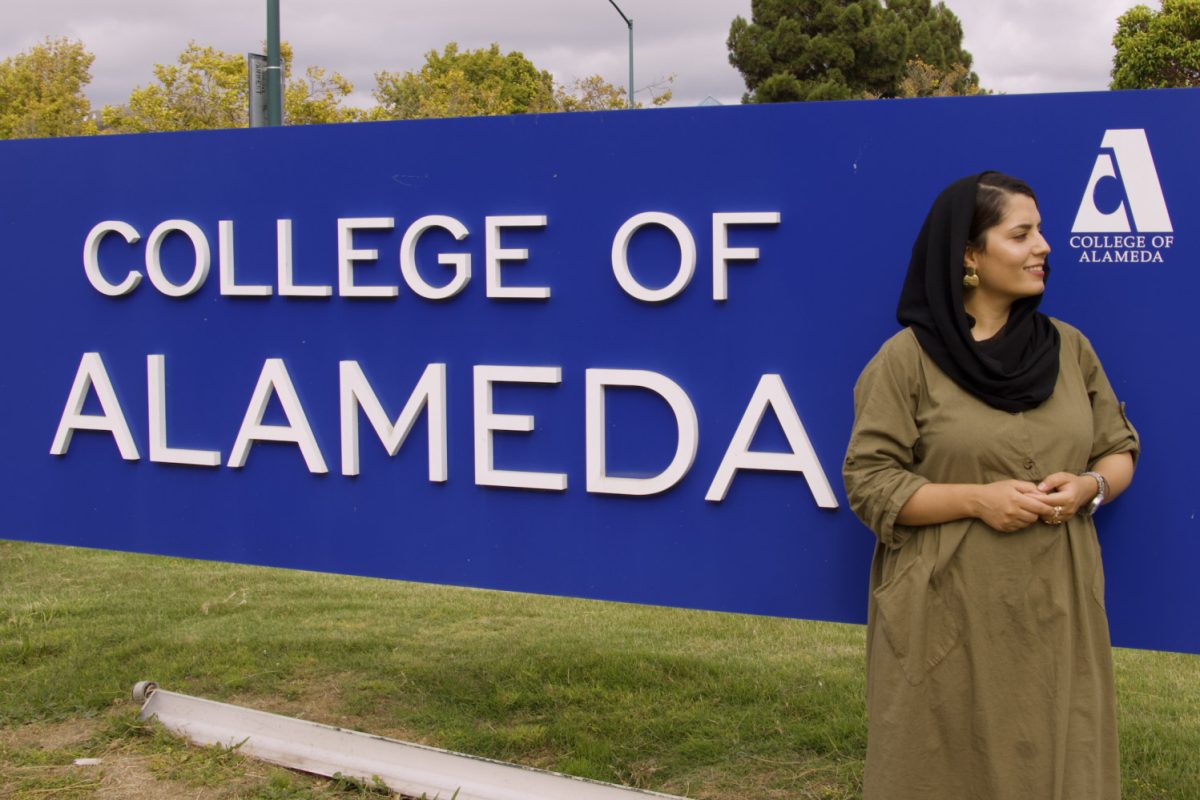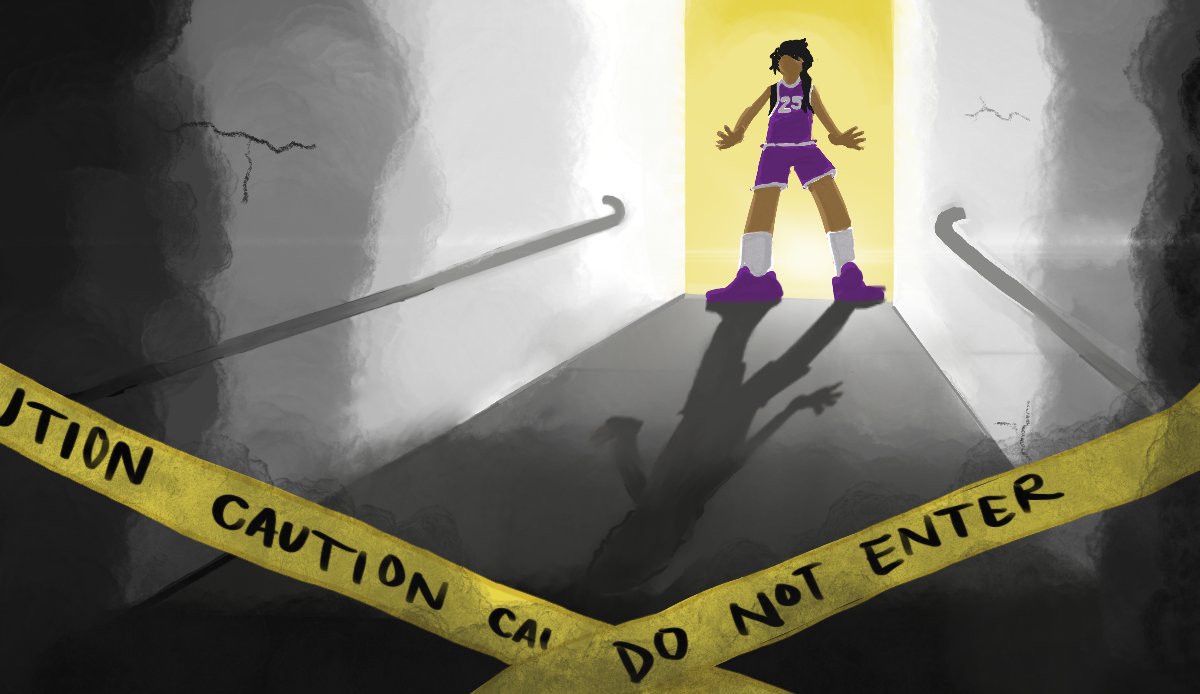Lively celebration marks Día de Los Muertos

The sounds of drums, conches and other instruments reverberated through the Laney Tower as the June Steingart Gallery hosted a Día de los Muertos (Day of the Dead) celebration on Nov. 2.
Día de los Muertos honors loved ones who have died. Students, faculty, and community members gathered in the gallery to marvel at the altars and decorations that celebrate the dead. The exhibit will run until Nov. 15.
Día de los Muertes was originally an Aztec holiday. Now it has become a national holiday in Mexico. It is also celebrated in many other Latin-American countries.
People build altars and decorate them with items that had meaning for the departed and even include their favorite food and beverages. The goals are for the departed to experience energy and emotions from the living and for the living to have the dead present in their lives. One of the exhibits was a ballot box where people could cast votes the way their loved ones would have.

In addition to the great artwork inside the gallery, the Aztec dance group Nahui-Ehecatl preformed in the Tower lobby. They were dressed in traditional Aztec costumes. They began with a blessing, turning to each of the four directions and chanting. They burned incense made from the sap of native trees. They used the smoke to bless the audience. After that, drums kept the beat as they danced for at least 30 minutes.

According to Gilberto Oliveras, a member of Nahui-Ehecatl, the dances mirrored the images of cosmic cycles. Each step had a meaning. After they finished their performance he explained the importance of maintaining their cultural heritage and traditions. He also wanted people to know that their ceremonies had nothing to do with witchcraft or black magic.
Another member of the group, Azwuan Barrera, told the audience how important it was to take care of our environment. He stressed how important clean water is for everyone. He urged the crowd to take action and specifically mentioned the situation at Standing Rock.

When they were finished, they asked that everyone give them space to enter the gallery and bless the altars inside. This also provided a good opportunity for spectators to take pictures of the group, which also included Marisol Solis and Moyra Hernandez.
While the dancers were finishing up, refreshments were set out for everyone to enjoy. These included tamales, rice, beans and horchata.
Remembering family

Lourdes Parra, a Laney College Spanish professor for over 37 years, created beautiful altars for her mother, Consuelo Traspeña (below), and her grandmother, Concepción Zamora (right).
She explained that the pathway was orange to represent candlelight and marigolds. It is meant to light the way back to the departed’s grave so they can be reunited with their families.
“If we dance, they dance,” she said. “If we are happy, they are happy.”
She went on to explain how it was different from Memorial Day because Día de los Muertos is more a shared experience with the dead.
“Our offerings are made by hand,” she said. “We are offering of ourselves, of our time.”
Sometimes people even spend the night in the cemetery. In some countries, huge, very elaborate kites are made to help lead their dead.
“We are not afraid to die because we all die,” Parra said. “The dead make no distinctions between rich and poor, men and women, kings and commoners. All are equal.”

























